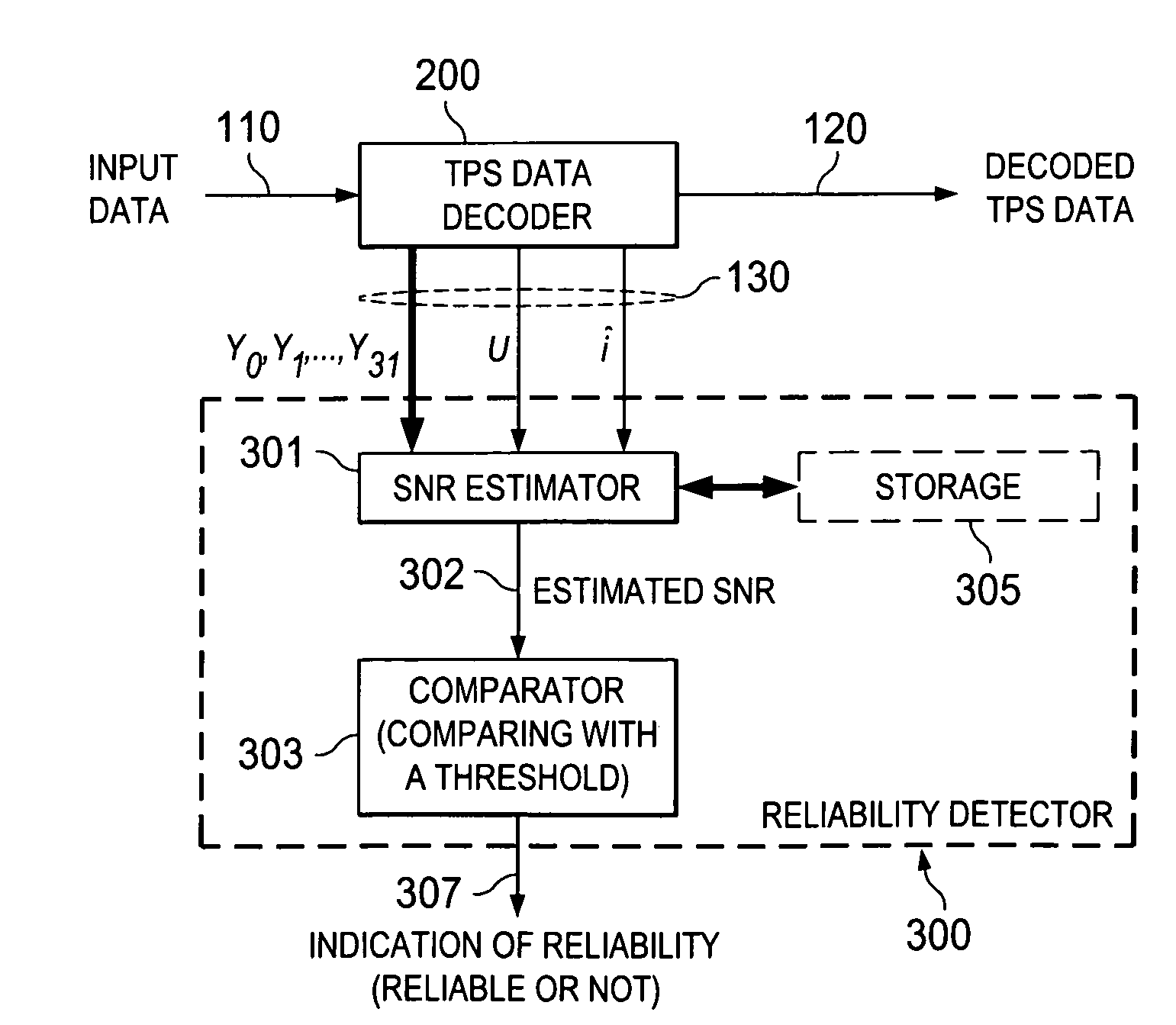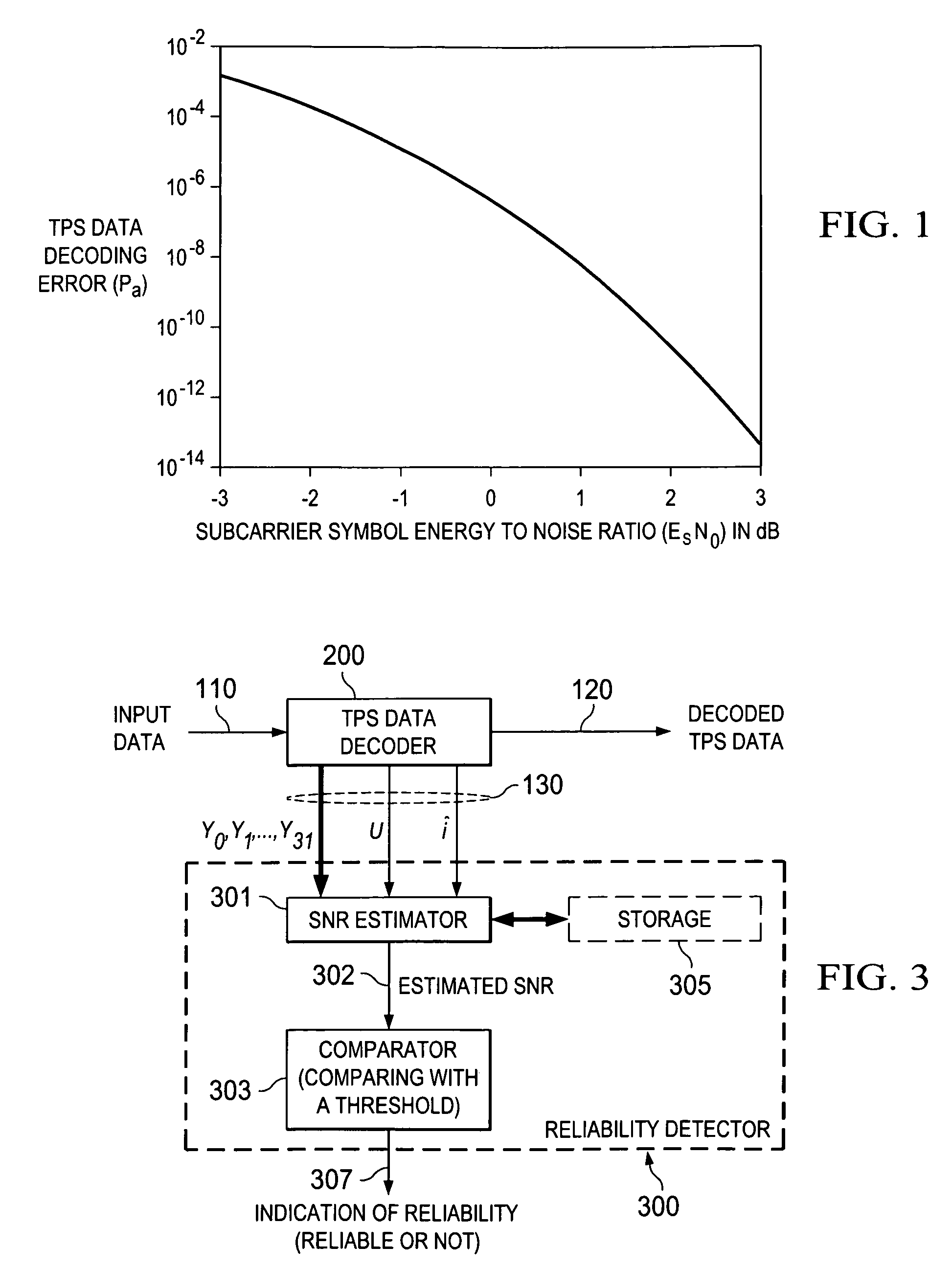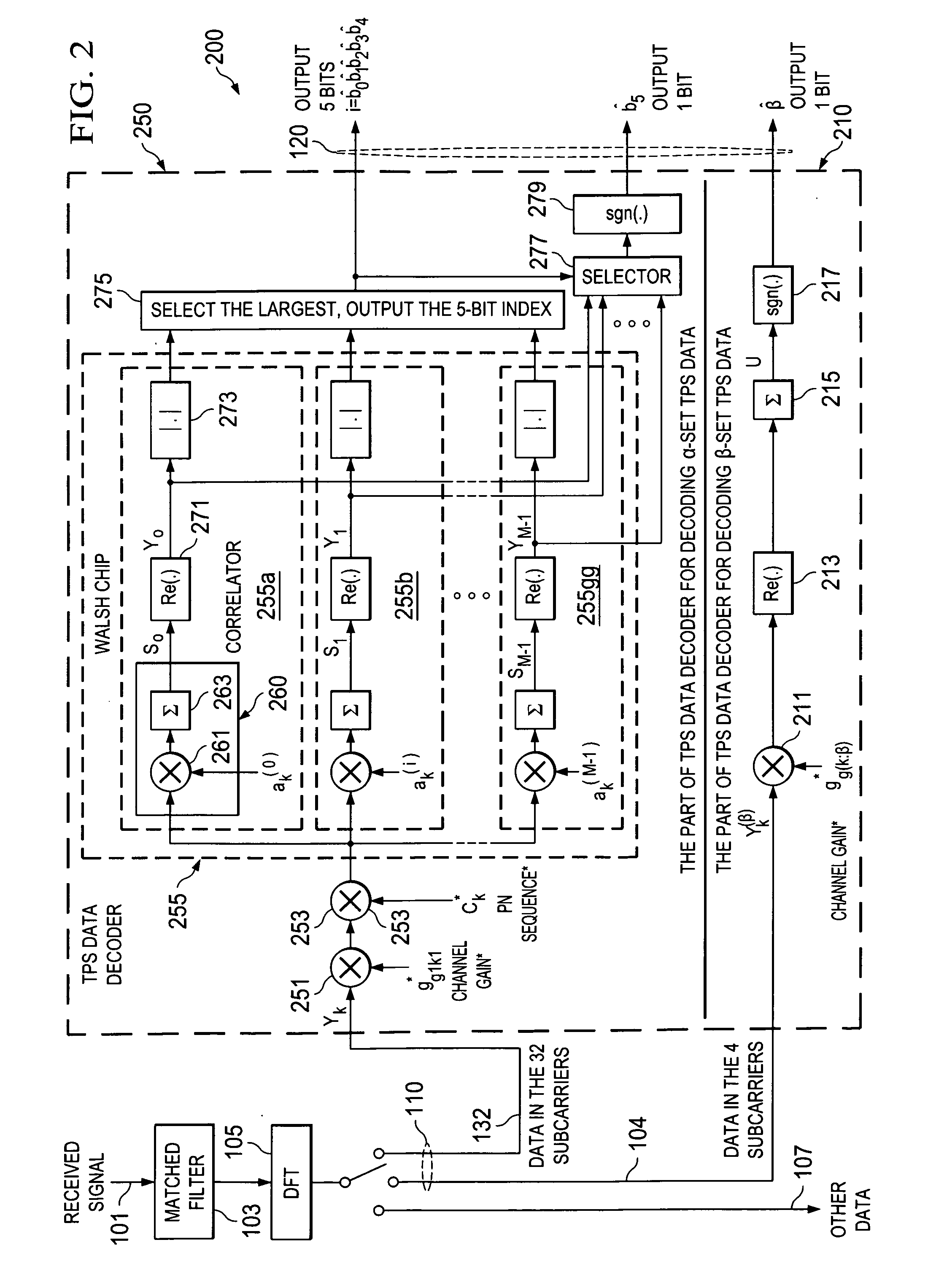Reliability detector for tps data decoding, particularly in digital televisions
a technology of reliability detector and tps data, which is applied in the field of digital television systems, can solve the problems of always being unable to distinguish different services based on possibly erroneous -set tps data, and achieve the effect of reducing the likelihood of a mistaken discard and improving the viewing quality of tv programs
- Summary
- Abstract
- Description
- Claims
- Application Information
AI Technical Summary
Benefits of technology
Problems solved by technology
Method used
Image
Examples
Embodiment Construction
[0012]FIG. 1 plots the error probability in decoding the six bits in the α-set, Pα, against the subcarrier symbol energy to noise ratio, Es / N0, for AWGN channels. It is apparent that Es / N0 equal to about 2.2 dB gives a Pα value of 10−11, corresponding to a commonly used view-quality criterion of one error event every one hour of TV viewing. Although the required Es / N0 value is very low, the received Es / N0 value can drop significantly when the received signal is in deep fade. A commonly used technique to prevent this significant drop in Es / N0 is to use frequency diversity. This diversity can be utilized if the frequency band used to transmit the signal is wider than the coherence bandwidth of the channel. Although a DTV-T signal occupies a bandwidth of about 8 MHz, the subcarriers that carry the TPS data are clustered within a bandwidth of only 72 kHz. Utilizing frequency diversity is not always possible.
[0013]The receiver may not need to check the bit in the β-set for each signal fr...
PUM
 Login to View More
Login to View More Abstract
Description
Claims
Application Information
 Login to View More
Login to View More - R&D
- Intellectual Property
- Life Sciences
- Materials
- Tech Scout
- Unparalleled Data Quality
- Higher Quality Content
- 60% Fewer Hallucinations
Browse by: Latest US Patents, China's latest patents, Technical Efficacy Thesaurus, Application Domain, Technology Topic, Popular Technical Reports.
© 2025 PatSnap. All rights reserved.Legal|Privacy policy|Modern Slavery Act Transparency Statement|Sitemap|About US| Contact US: help@patsnap.com



